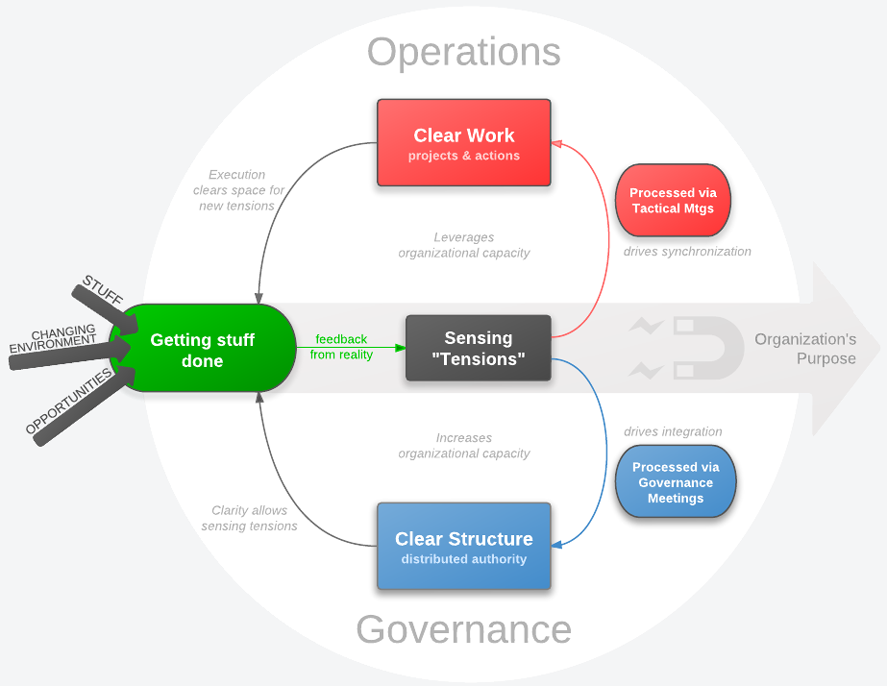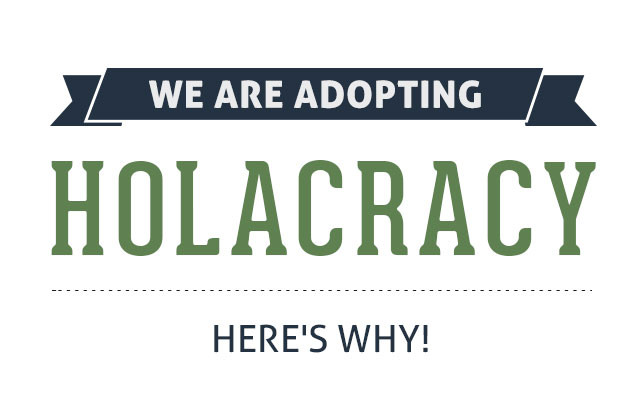You have a new idea for your organization.
It’s a brilliant idea that will not only improve product quality but also ship it faster, reduce costs and boost profits.
But chances are the process at place for submitting your idea means doing lots of research, preparing a report and then trying to organise a meeting to present it.
And once that’s done, you have to hope one of the company decision makers will take action.
It’s a frustrating process, and you’ve probably experienced it if you’ve been in a large organization.
But smaller organization don’t face such issues.
In a startup, you’re nimble. Decisions are quick. And you can adapt fast.
But as a startup grows, the dynamics of the organization change. It creates layers of managers. Bureaucracy sets in. It’s not so easy anymore to get things done. You need “Approval” for every step.
If you’ve been part of a medium to large size business you would have experienced these roadblocks to productivity:
- The Organization is slow to change. It’s not able to take advantage of the new opportunities coming it’s way.
Your bubbling with ideas, but the Management is so overwhelmed that they become too slow to take decisions. Eventually complacency sets in, and no one really cares anymore. - You’re involved in an endless string of meetings, that seem to have no purpose. Instead of meetings being a platform to get stuff done, and if often a place where Egos clash.
- In order to get things done, you need to build relationships with the right people in the organization. Without playing politics, you cannot move forward.
- The higher purpose of the organization is lost. You feel like a cog in a machine, and can’t wait to get home. Work seems meaningless.
How to Increase Productivity in a Growing Organization?
Edward Glaeser author of Triumph of the City, shows in his research that every time the population of a city doubles, productivity per resident increases by 15%.
However when an organization grows, productivity decreases.
Tony Hsieh, CEO of Zappos, was grappling with the question: How to create organizations that are more like cities, so that when it grows, overall productivity increases.
To overcome this, in 2013 Zappos adopted a radical new approach to management called Holacracy.
The Holacracy approach is a fundamental shift in the way organizations are structured and the way power is distributed.
I’ve been studying it for the last couple of months. The more I read about it, the more I believe this is the future of management.
What is Holacracy & How does it Work?
Holacracy is a new approach to management where authority is distributed to roles that are energized by members of the organization in order to fulfill it’s purpose.
Think of Holacracy as a Management Operating System for your organization. Moving from MS-DOS to Windows is a big jump, and depending on the power of the OS, a user of the Operating System can experience significant boost to the productivity.

Similarly adopting Holacracy is like installing a new Management Operating System in your organization.
Right now you’re probably working in a hierarchical organization, where power & authority are concentrated at the top, held by a few people who tell others what to do.
With Holacracy authority is distributed to various roles in order fulfill the purpose of the organization. Each role holder has full authority to do what is necessary to fulfill the role’s purpose, as long as they do not violate the organization’s rules.
In the beginning, while studying Holacracy it may not look that different, however once you go into it deeper, you’ll see it’s a paradigm shift.
Here are some key differences between typical organizations, and those that use Holacracy:
| In Traditional Companies | With Holacracy |
|---|---|
| Job descriptions Each person has exactly one job. Job descriptions are imprecise, rarely updated, and often irrelevant. | Roles Roles are defined around the work, not people, and are updated regularly. People fill several roles. |
| Delegated Authority Managers loosely delegate authority. Ultimately, their decision always trumps others. | Distributed Authority Authority is truly distributed to teams and roles. Decisions are made locally. |
| Big Re-Orgs The org structure is rarely revisited, mandated from the top. | Rapid Iterations The org structure is regularly updated via small iterations. Every team self-organizes. |
| Office Politics Implicit rules slow down change and favor people “in the know”. | Transparent Rules Everyone is bound by the same rules, CEO included. Rules are visible to all. |
So How does it Improve Productivity?
- Team members bring their full potential to the organization. They can work in any part of the organization where they see a match between their talents and the requirements of a Role that needs to be fulfilled.
- There’s a very strong sense of Purpose. In Holacracy, the structure is not built around the people, but around the work the company needs to do to achieve its purpose.
- Expectations are crystal clear. Unlike job descriptions that are often outdated and irrelevant to day to day work, in Holacracy people can fill multiple roles with clear accountabilities that are aligned with the talents of the role holder.
- Need to change something? Holacracy’s governance meetings create safe space for anyone on the team to use the process to make decisions on the structure of the organization. Thereby creating a truly responsive organization.
- Have a new idea? Need to get something done? No need to ask permission. Role holders have full authority to do whatever they need to fulfill the role’s purpose as long as they don’t violate the organization’s rules.
Here’s a good diagram that shows how work gets in an organization powered by Holacracy:

Yes! Calm Achiever is Powered by Holacracy
We made the move in October 2016. I must say that every Holacracy meeting we have, brings in positive energy to the organization.
There’s still a lot more to learn. But after tasting it, I can’t think of any other way to manage an organization (or in other words, create a structure so that it manages itself!)
Interested to Learn More about Holacracy? Check out These Links!
- Holacracy.org Official website. Check out their Tactical & Governance Meeting Formats (They got me hooked on the model)
- Holacracy Book by Brian Robertson, co-founder of Holacracy. This is a comprehensive book to get started with Holacracy. Foreword by David Allen.
- Holacracy Comic Book
- Book: Reinventing Organizations An amazing book on the evolution of management and the emergence of self-managed organizations.
- Ted Talk by Brian Robertson. If you don’t have time to read any of the above books, watch this video.
Are you in India, and adopting Holacracy in your Organization? Contact Us, we would love to hear your experience.
I believe our work should be an expression of our most creative selves. I work with business owners and their teams to achieve stress-free productivity.

